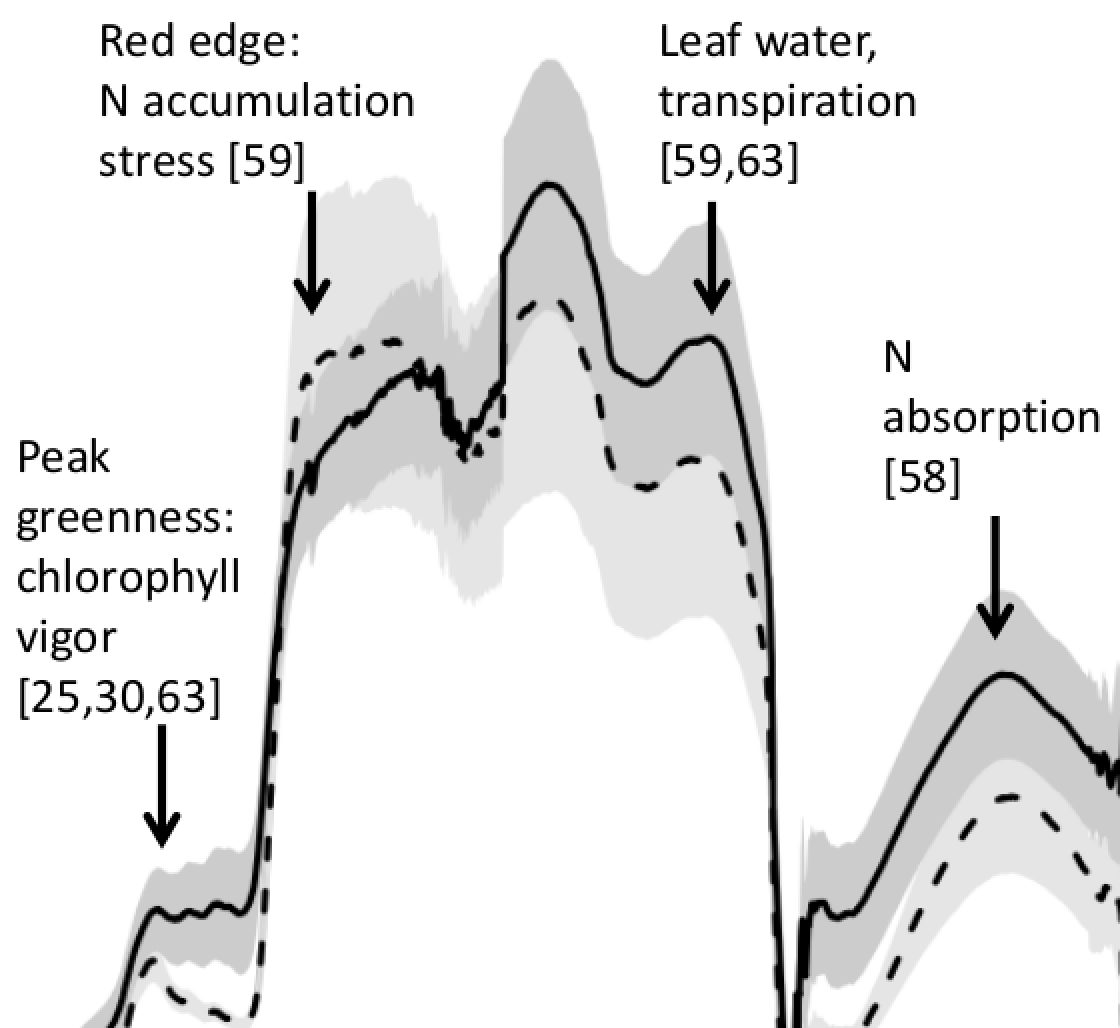Using remote sensing to model biomass accumulation in a wetland plant
 Monday, March 10, 2014 at 1:21PM
Monday, March 10, 2014 at 1:21PM Connell, J.L., K.B. Byrd, M. Kelly. 2014. Remotely-sensed indicators of N-related biomass allocation in Schoenoplectus acutus. PLOS One 9(3):e90870
 Some of the reflectance spectra for S. acutus
Some of the reflectance spectra for S. acutus
Coastal marshes depend on belowground biomass of roots and rhizomes to contribute to peat and soil organic carbon, accrete soil and alleviate flooding as sea level rises. For nutrient-limited plants, eutrophication has either reduced or stimulated belowground biomass depending on plant biomass allocation response to fertilization. Within a freshwater wetland impoundment receiving minimal sediments, we used experimental plots to explore growth models for a common freshwater macrophyte, Schoenoplectus acutus. We used N-addition and control plots (4 each) to test whether remotely-sensed vegetation indices could predict leaf N concentration, root:shoot ratios and belowground biomass of S. acutus. Following 5 months of summer growth, we harvested whole plants, measured leaf N and total plant biomass of all above and belowground vegetation. Prior to harvest, we simulated measurement of plant spectral reflectance over 164 hyperspectral Hyperion satellite bands (350 – 2500 nm) with a portable spectroradiometer. N-addition did not alter whole plant, but reduced belowground biomass 36% and increased aboveground biomass 71%. We correlated leaf N concentration with known N-related spectral regions using all possible normalized difference (ND), simple band ratio (SR) and first order derivative ND (FDN) and SR (FDS) vegetation indices. FDN1235, 549 was most strongly correlated with leaf N concentration and also was related to belowground biomass, the first demonstration of spectral indices and belowground biomass relationships. While S. acutus exhibited balanced growth (reduced root:shoot ratio with respect to nutrient addition), our methods also might relate N-enrichment to biomass point estimates for plants with isometric root growth. For isometric growth, foliar N indices will scale equivalently with above and belowground biomass. Leaf N vegetation indices should aid in scaling-up field estimates of biomass and assist regional monitoring. Journal link. Pdf download.
Key words: balanced growth hypothesis; eutrophication; freshwater marsh; global climate change; isometric allocation hypothesis; optimal partitioning theory; root:shoot ratio; wetland accretion.
 carbon,
carbon,  nasa,
nasa,  open access,
open access,  remote sensing,
remote sensing,  wetlands
wetlands